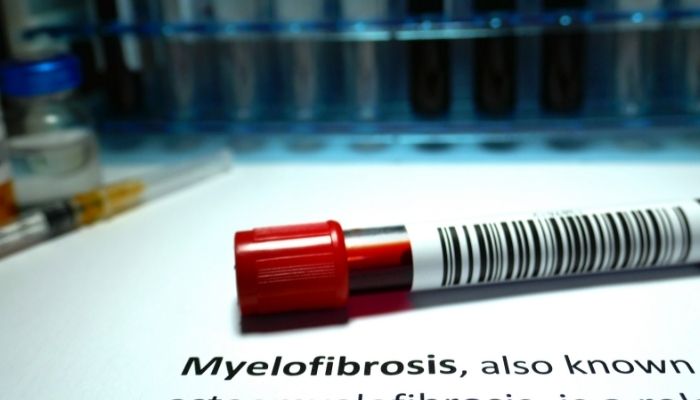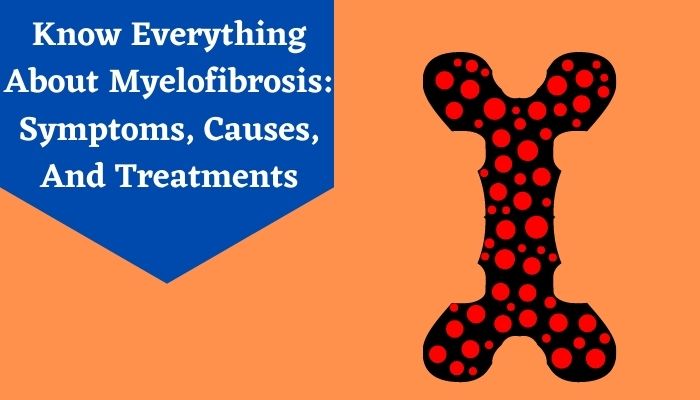Myelofibrosis is an exceptional type of bone marrow cancer that interrupts your body's normal blood cell production. Due to myelofibrosis, there could be severe scarring in your bone marrow. As a result, you may suffer from severe anemia that can lead to feebleness and fatigue. This disease can happen to both men and women.
Myelofibrosis is an uncommon type of blood cancer where your healthy bone marrow gets replaced by fibrous scar tissues. This is a chronic form of leukemia. When myelofibrosis arises on its own, it is called primary myelofibrosis. But if you get it due to another disease, then it is called secondary myelofibrosis.
The bone marrow contains juvenile blood-forming cells that may change into three types of specialized blood cells: red blood cells, white blood cells, or platelets. If there is a mutation in the DNA of a single cell, this mutation is transported to new cells when the faulty cell splits.

More abnormal cells are produced with time. There could be some additional mutations that can make cancer cells more aggressive. These cells can replace wholesome cells in the bone marrow. As a result, your bone marrow can’t produce normal blood cells. Anomalous blood cells may grow outside the bone marrow (in the liver, lungs, lymph nodes, and other organs).
Myelofibrosis is an unusual condition. Several medical studies have claimed that only 1.5 cases are reported per 100,000 people each year in the United States. Though it can happen at any age, people who are above 50 years are more prone to getting this disease. Children below 3 years old can also be diagnosed with myelofibrosis.
Myelofibrosis Symptoms
Many people with myelofibrosis may not experience any symptoms for many years. Nearly one-third of patients don’t observe any symptoms during the initial stages of the disease. But later, they may experience the below-mentioned symptoms.- Anemia: A scarcity of red blood cells among with fatigue, weakness, and shortness of breath
- Pale skin
- Enlarged spleen (splenomegaly): You may experience fullness or discomfort in the upper left section of the abdomen.
- Portal hypertension: An enhanced blood pressure in the vein that transports blood from the spleen to the liver.
- Dilated veins in the stomach and esophagus: These veins may break and cause bleeding.
- Night sweats
- Unsolved blood clots
- Recurrent infections
- Fever
- Itching
- Abnormal bleeding or bruise
- Inflamed liver
- Bone or joint pain
- Weight loss
- Extramedullary hematopoiesis: Abnormal blood cells may grow outside the bone marrow. These faulty cells could penetrate other parts of the body, including the lungs, gastrointestinal tract, spinal cord, brain or lymph nodes. These cells may form masses (tumors) that give pressure on organs or impact their functions.
Causes of Myelofibrosis
Myelofibrosis happens when there are mutations in bone marrow stem cells. The exact causes of these genetic mutations are not clear yet. When these mutated blood stem cells replicate and divide, the mutations may pass into other new cells. When more mutated cells are produced, they could create severe effects on blood production.As a result of myelofibrosis, there could be a scarcity of red blood cells. This can lead to severe anemia. People who are having myelofibrosis may also have scarred bone marrow instead of spongy bone marrow.
Several specific gene mutations have been noticed in people with myelofibrosis. The most common is the Janus kinase 2 (JAK2) gene mutation. Other less common mutations are CALR and MPL. Some people may not have any recognizable gene mutations.
Myelofibrosis Diagnosis- How To Dect Myelofibrosis
After performing a physical exam, your doctor will check your medical history, including the symptoms you are experiencing. The doctor will look for the signs of an enlarged spleen or anemia.Diagnostic tests that are recommended by the doctor are:
Complete Blood Count (CBC)
An enhanced number of white blood cells and platelets and a lower than the normal number of red blood cells may indicate myelofibrosis.Blood Tests
Elevated levels of uric acid, bilirubin, and lactic dehydrogenase may indicate the presence of myelofibrosis.Additional tests may be required are,
Gene Mutation Analysis
Blood cells could be examined for certain mutations associated with myelofibrosis.Bone Marrow Biopsy
a bone marrow sample will be removed for examination under a microscope.Imaging Tests
An ultrasound will be performed to check for the enhancement of the spleen.Myelofibrosis Treatment
The prime objective of myelofibrosis is to overcome the signs and symptoms of the disease. A bone marrow transplant may be recommended for a cure, but this treatment could be difficult for the body, thus, many people often try to discard this.Low-risk myelofibrosis may not need immediate treatment, while people with high-risk myelofibrosis may need aggressive treatment, such as a bone marrow transplant. For intermediate-risk myelofibrosis, treatment methods are mainly focused on managing symptoms.


